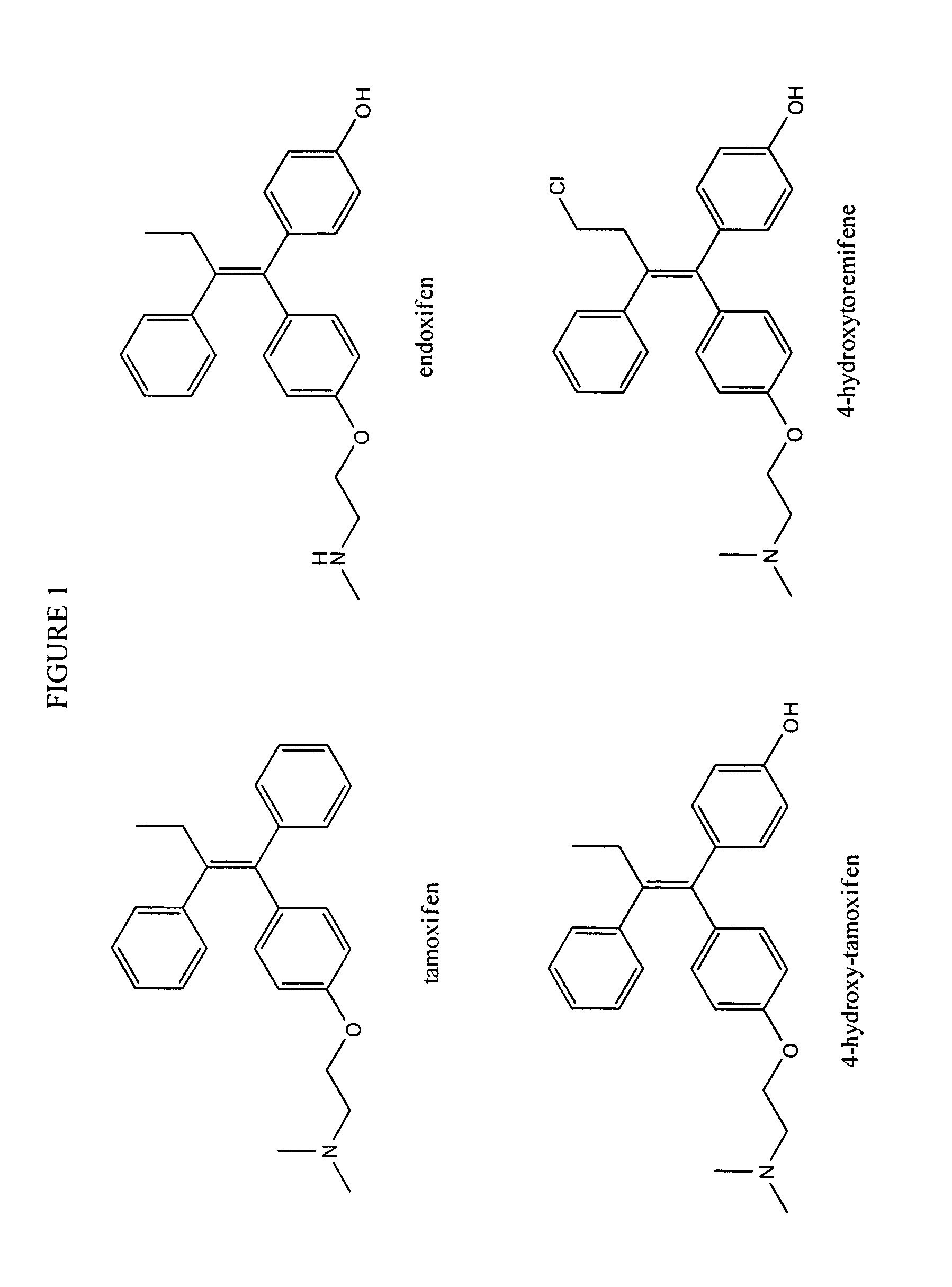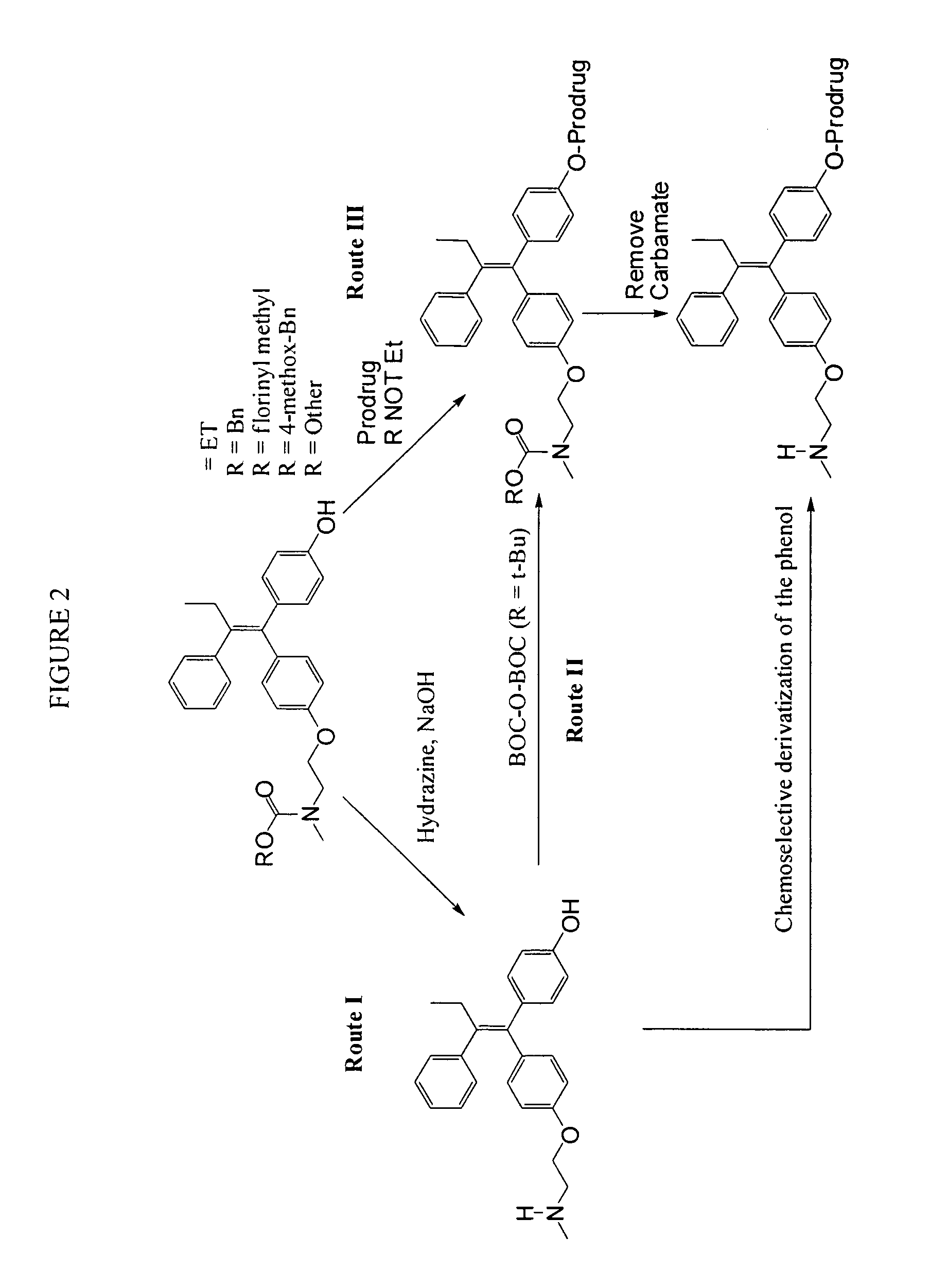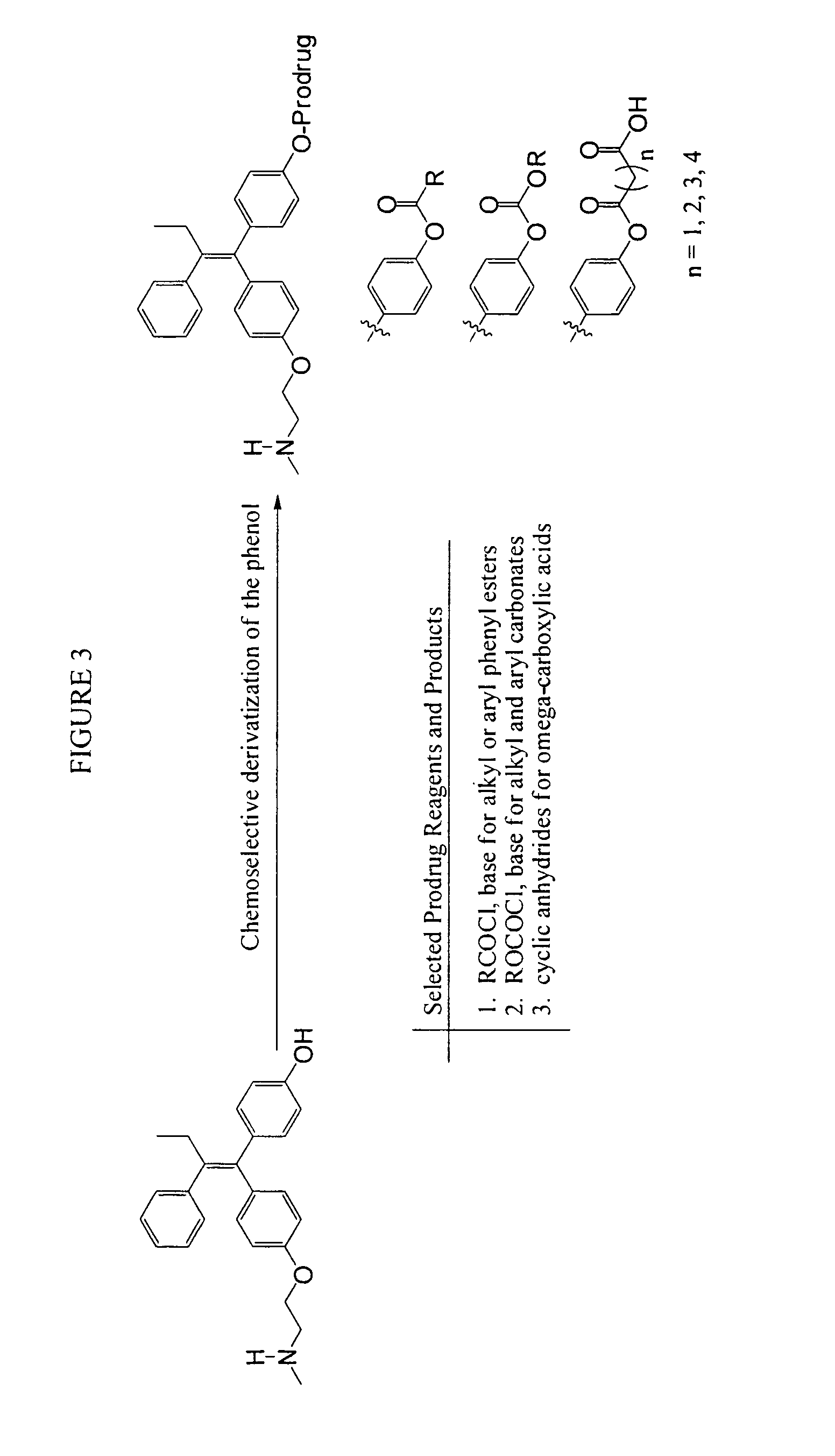Substituted triphenyl butenes
a triphenyl butene and substitute technology, applied in the field of compound, can solve the problems of reducing the level of active tamoxifen metabolites in their circulation, reducing tumor-free survival, and poor response to tamoxifen therapy, so as to improve the bioavailability, improve the clinical outcome, and improve the effect of outcomes
- Summary
- Abstract
- Description
- Claims
- Application Information
AI Technical Summary
Benefits of technology
Problems solved by technology
Method used
Image
Examples
example 1
6-hydroxyhexyl bromoacetamide
[0149]
[0150]6-aminohexanol is dissolved in dichloromethane. This solution may be cooled in an ice water bath. The solution is the treated with neat bromoacetyl bromide or a solution of this reagent in dichloromethane. The progress of the reaction is followed by TLC. When the reaction is complete, the mixture is washed with dilute hydrochloric acid, dilute sodium bicarbonate and water. The organic layer is then dried over sodium sulfate or other suitable desiccant. The dried suspension is then filtered and concentrated under reduced pressure to afford 6-hydroxyhexyl bromoacetamide among other products.
example 2
(E)-4-(2-phenyl-1-(4-(triisopropylsilyloxy)phenyl)but-1-enyl)phenol
[0151]
[0152]The THP ether of 4-bromophenol is dissolved in ether. To this solution is added magnesium metal. The mixture is warmed gently to initiate the reaction. When the starting material has been consumed (TLC), the mixture is cooled in an ice bath and the ketone is added. After the reaction has gone to completion (TLC), the reaction is quenched by slow addition of ethanolic HCl. The mixture is stirred until the reaction is complete (TLC). Excess acid is neutralized (ph ca. 7, pH test paper) with dilute sodium hydroxide solution. The organic phase is separated and washed with brine. The aqueous phase is washed with ether. The phases are then separated. The organic phases are combined, dried over sodium sulfate, filtered and concentrated to afford (E)-4-(2-phenyl-1-(4-(triisopropylsilyloxy)phenyl)but-1-enyl)phenol among other products.
example 3
(E)-N-(6-hydroxyhexyl)-2-(4-(2-phenyl-1-(4-(triisopropylsilyloxy)phenyl)but-1-enyl)phenoxy)acetamide
[0153]
[0154](E)-4-(2-phenyl-1-(4-(triisopropylsilyloxy)phenyl)but-1-enyl)phenol from reaction 2 is dissolved in THF. The solution is then treated with sodium hydride (1 equiv). To this solution is added 6-hydroxyhexyl bromoacetamide (from reaction 1). The mixture is stirred until the reaction is complete (TLC). The reaction is then quenched by addition of a small quantity of water. After the reaction is stirred for several minutes, solid sodium sulfate is added. The mixture is the filtered and concentrated under reduced pressure to afford (E)-N-(6-hydroxyhexyl)-2-(4-(2-phenyl-1-(4-(triisopropylsilyloxy)phenyl)but-1-enyl)phenoxy)acetamide among other products.
PUM
| Property | Measurement | Unit |
|---|---|---|
| Ratio | aaaaa | aaaaa |
| Pharmaceutically acceptable | aaaaa | aaaaa |
Abstract
Description
Claims
Application Information
 Login to View More
Login to View More - R&D
- Intellectual Property
- Life Sciences
- Materials
- Tech Scout
- Unparalleled Data Quality
- Higher Quality Content
- 60% Fewer Hallucinations
Browse by: Latest US Patents, China's latest patents, Technical Efficacy Thesaurus, Application Domain, Technology Topic, Popular Technical Reports.
© 2025 PatSnap. All rights reserved.Legal|Privacy policy|Modern Slavery Act Transparency Statement|Sitemap|About US| Contact US: help@patsnap.com



